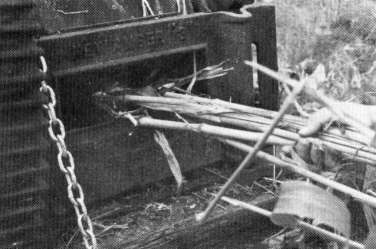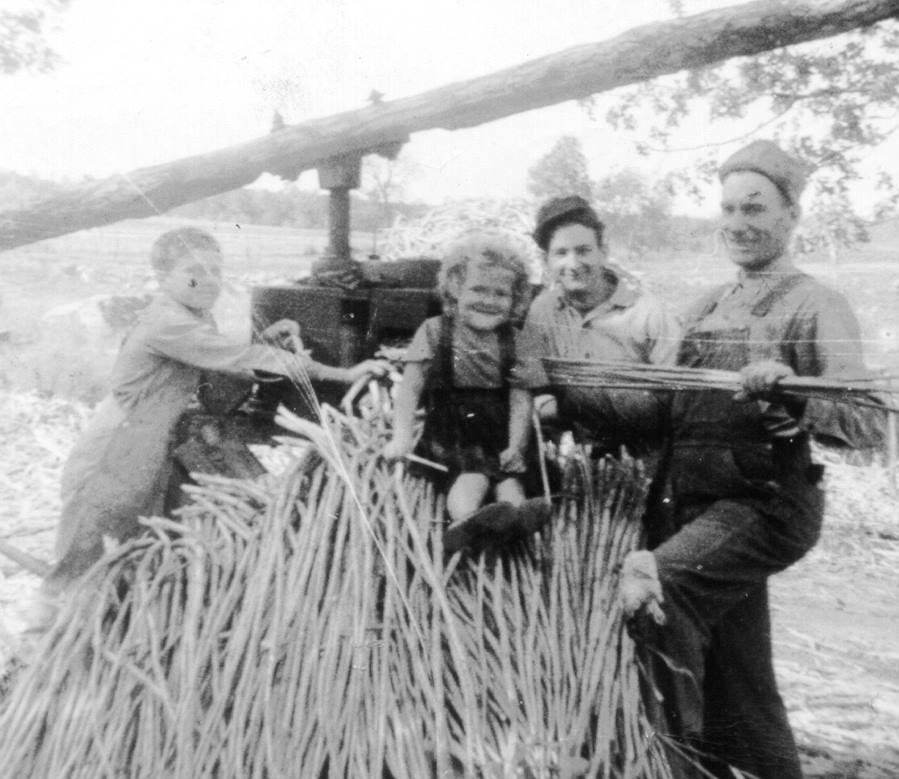By Dr. Curtis Varnell
Fall has arrived and with it all the beauty attached to the changing colors of tree leaves, fall pumpkin patches, and huge fields covered with bales of hay for the winter. The mountain slopes are a kaleidoscope of colors ranging from dark red, orange, yellows, and perpetual green of the pines.
During my grandparent’s time, crops were put by, summer canning was done, and it was time to harvest the sorghum cane to make, what is called in Arkansas, sorghum molasses. Much of the south never has a long or hot enough summer to produce sugar cane and, needing a cheap and available source of sweetener, had long-before learned to make a syrupy mixture from sorghum.
The process had begun back in late May or early June when the sorghum seeds were planted. Usually, a farmer only planted eight or ten long rows, just enough to make a plentiful supply of cane for the ten gallons of sorghum the family would consume. Come October, the top of the plant containing the seed was cut off along with all of the leaves. The stalk was then cut off at ground level and allowed to sit for a day or so while the sorghum mill was cleaned and ready. The needed machinery was expensive so one person usually owned and operated the mill for the surrounding community. The mill consists of a series of rollers through which the stalks are pressed, extracting the juices contained in the plant. Powered by a horse or mule moving slowly in a circle turning the gears, the mill exerted tremendous pressure on the stalks. Unfortunately, many accidents occurred while feeding the stalks into the mill. My grandfather’s cousin, John Rhinehart got his hand entangled in the mill. He died a few days later from a gangrene infection. Others lost arms and legs as they tried to push the stalks through the mill, a dangerous job.
Once the juice is extracted, it was poured into boiling pans set over a wood-burning fire. Almost ten gallons of juice was needed to make one gallon of sorghum molasses. Mixed with water, the juice was moved up a large copper or iron vat that was divided into a series of trays. As the juice was paddled upward through these trays, materials were boiled away and the greenish scum that formed on the syrup was removed. After a number of hours, the sorghum reached perfection at just the right consistency, slightly thicker than syrup. The left-over stalks and materials skimmed from the juice were fed to the pigs, preparing them for their harvest day which would arrive after the first frost.
Refined sugar was relatively expensive and a luxury item to cash-starved people of the mountains. Another and easier source of sweetener was to rob a honey tree but extraction was not always without pain or risk. Locating a hollow tree where the bees were encamped was often the easy part, robbing the bees was another thing entirely. My Oklahoma relatives located a tree near our house in the Ellsworth community. Convinced they were going to get several gallons of honey from the active hive, they covered themselves with every available piece of clothing they owned. My uncle Ed, a large man, found a heavy black suit made of some sort of rubberized material. I watched from a nearby hill as they carefully approached the tree and began using the chainsaw to open the trunk. The bees swarmed, covering my uncles. Some managed to find an opening into Ed’s costume and, trapped between skin and suit, began to extract vengeance on his body. Bellowing, he began to run, removing and flinging pieces of his clothing as he circled the hill, thousands of more bees in hot pursuit. A three-hundred-pound naked man covered with red whelps is not a pretty sight.
Slather a hot cat-head biscuit with fresh butter, apply a liberal dose of molasses or golden honey, now that, my friends, is a pretty sight!









